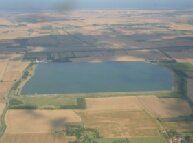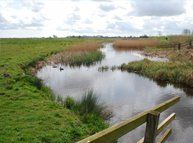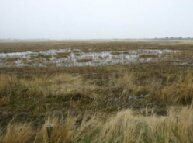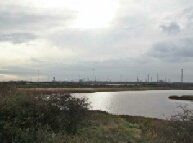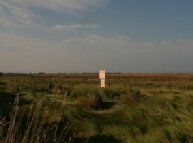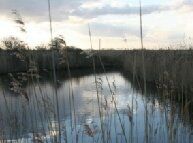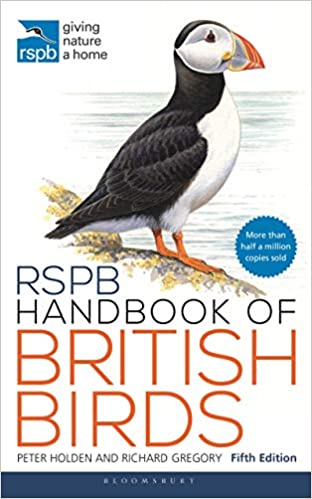
Free birdwatching magazine and guide to finding birds
LINCOLNSHIRE
Browse a range of New and used Avifauna for the English county of Lincolnshire.
Also you may wish to view a wide selection of suitable field guides by
The Birds of Lincolnshire
- ASIN : B001IN9IC4
- Publisher : Lincolnshire Naturalists' Union; 1st Edition (1 Jan. 1955)
A Birdwatching Guide to the Lincolnshire Coast
- ASIN : B00KMYZK3G
- Publisher : James Wright, Friskney; 1st edition (1 Jan. 2014)
- Paperback : 20 pages
The Migration notes of a Lincolnshire Farmer
- ASIN : B083G6MW6W
- Language : English
- File size : 1996 KB
- Text-to-Speech : Enabled
- Screen Reader : Supported
Covenham Reservoir
200 acre reservoir built next to the Louth Navigation canal between 1963-1978.Well known as a regular site for waterbirds especially in winter where it attracts Smew, goldeneye, goosander divers....
Donna Nook NNR
Donna Nook is a point on the low-lying coast of Lincolnshire, England, north of the village of North Somercotes. A 6 miles (10 km) coastal strip stretching from Saltfleet in the south, to Somercotes Haven in the north, is managed by the Lincolnshire Wildlife Trust ...
Epworth Turbary
An area of raised bog ,reed swamp, mixed fen, heath and birch wood lying close to the village of Epworth, this Lincolnshire Wildlife Trust reserve is a SSSI.....
Far Ings NNR
Far Ings is situated on the outskirts of Barton on the south bank of the Humber, a major east-west flyway for migrating birds. Autumn and winter reward the observer on the Humber bank with sightings of redshank, wigeon, black-tailed godwit, skeins of pink-footed geese and many more species..
Freiston Shore RSPB Reserve
Situated on the Wash Freiston shore with an expanding range of wetland habitats. Breeding Avocet and other waders with spectacular winter wildfowl.....
Gibraltar Point NNR
Gibraltar Point national nature reserve is an area of approximately 4.3 km2 (1.7 sq miles).The reserve is owned by Lincolnshire County Council and East Lindsey District Council and is administered by the Lincolnshire Wildlife Trust.
North Killingholme Haven Pits
Complex of four flooded clay pits. The reserve is important for its saline lagoon habitat, which supports several rare invertebrate species.....
Ropsley Rise Wood Kesteven
An area of deciduous and mixed confer woodland , part of the larger Kesteven forest. The woodland is a good place to find all three woodpeckers and long-eared owl along with other common woodland birds...
Saltfleetby-Theddlethorpe Dunes
Saltfleetby-Theddlethorpe Dunes is a national nature reserve on the coast of Lincolnshire, England, in the parishes of Saltfleetby and Theddlethorpe. It is managed in part by Natural England; in part by the Lincolnshire Wildlife Trust....
Supplement to the birds of Lincolnshire 1954 - 1968
- ASIN : B001AZNVQ4
- Publisher : Lincolnshire Naturalists' Union (1 Jan. 1970)
CATON HAIGH: BIRD MIGRATION IN LINCOLNSHIRE
- ASIN : B07S7N28C3
- Language : English
- File size : 5380 KB
- Text-to-Speech : Enabled
- Screen Reader : Supported
- Enhanced typesetting : Enabled
- X-Ray : Not Enabled
- Word Wise : Not Enabled
- Print length :
- 31 pages
Birds of Louth
- Publisher : Louth Naturalists',Antiquarian & Literary Society (1 Aug. 2007)
- Language : English
- Paperback : 80 pages
- ISBN-10 : 0953953351
- ISBN-13 :
- 978-0953953356
CATON HAIGH: THE BIRDMAN OF GRAINSBY HALL
Although almost all wild birds and their nests are now protected by law, time was when shooting them was a popular pursuit - particularly among the wealthier classes.
During a period when binoculars (field glasses) and telescopes and cameras were basic and sometimes ineffective, a shotgun was often the preferred accessory
Not only did shooting birds provide sport but it supported science. Analysis, internal as well as external, of corpses provided invaluable information on the size, plumage, anatomical characteristics and diet of individual species.
This was the origin of ornithology. Only in the first few decades of the 20th Century did field observation (optically enhanced or otherwise) and note-taking gradually begin to take over.
One of the last and most noted of the gun-carrying ornithologists was George Henry Caton Haigh, a wealthy landowner whose time was mostly spent between his estates near Grimsby in Lincolnshire and Portmeirion in Merionethshire.
Come rain or shine, most autumn days would see him working the hedgerows, marshes and coastline in the quest for migrant birds - the rarer the better.
Some of his finds were no less than sensational - unique sightings (and shootings) of Radde’s warbler, Richard's pipit lanceolated warbler, buff-breasted sandpiper and more.
On one occasion, he shot a magnificent black-necked grebe off the Welsh Coast.
As it drifted out on the tide, he stripped off, plunged into the icy water and swam out to retrieve it, almost losing his life in the process.
Caton Haigh, who was also the days’s leading authority on the care and cultivation of Himalayan plants, kept meticulous records which are now held (along with the skins of some 300 skins of the birds he had shot) in the ornithological section of the Natural Museum at Tring in Hertfordshire.
Please note that we receive many hundreds of e-mails weekly. We will try our best to respond to your enquiry as efficiently and quickly as possible. If your enquiry relates to reserve and birding site access, please contact the relevant organisation. Sick, injured or young birds to RSPCA.
Enquiries about the sale of used birding equipment or ornithology books should be sent to the contact below.
Thank you
Join our mailing list
Contact Us
We will get back to you as soon as possible
Please try again later
